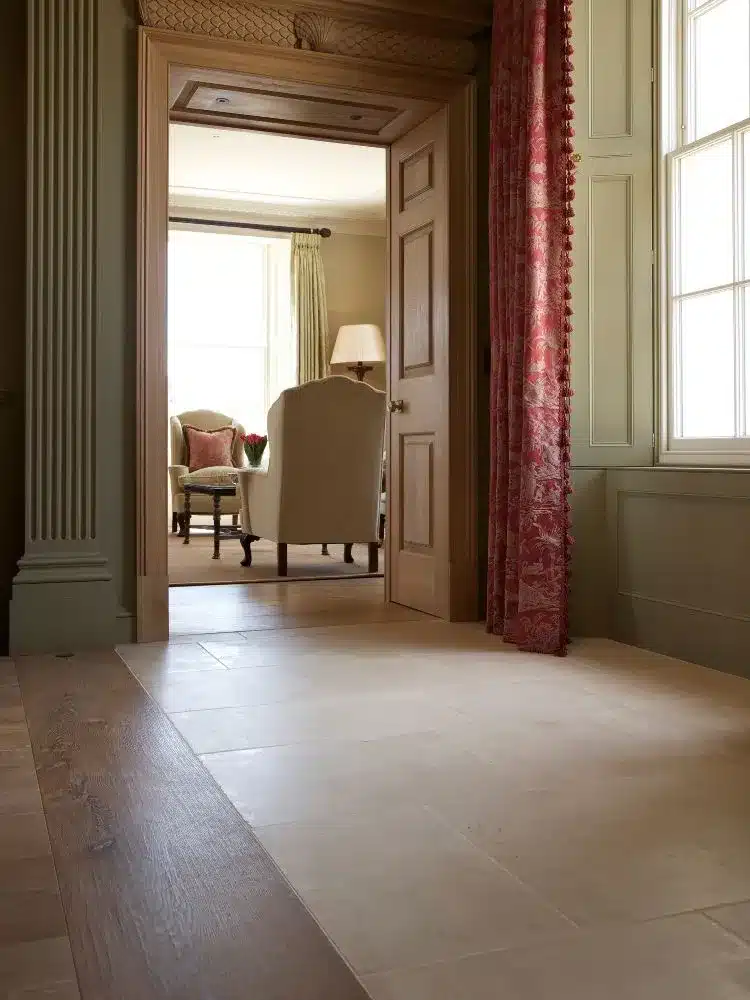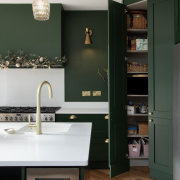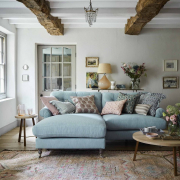Blending Stone and Wood Floors.

Blending stone and wooden flooring can significantly enhance the aesthetic appeal and functionality of various areas within a home, particularly in high-traffic zones such as hallways, kitchens, and bathrooms, where dining and living spaces intersect. This versatile design approach allows for the seamless integration of different materials, optimising their use according to the specific requirements of each space.
In essence, the concept of blending materials revolves around the idea of mixing and matching various flooring options to achieve both visual harmony and practicality. This means that homeowners have the flexibility to combine stone and wood flooring wherever it best serves their intended purpose.
However, while blending materials can offer numerous benefits, there are certain areas within the home where caution should be exercised, particularly when considering the use of engineered wood flooring. For instance, in areas prone to moisture and humidity, such as bathrooms, engineered wood may not be the most suitable option due to the risk of water stains and steam damage. In such cases, stone flooring emerges as a more resilient and practical choice, offering durability and longevity even in the face of moisture-related challenges.
Similarly, in kitchen environments where frequent food preparation occurs, engineered wood floors may be susceptible to damage from hot oil splashes and spills. In contrast, stone flooring provides greater resistance to such hazards, making it a preferred option for maintaining the integrity and longevity of the floor surface. Moreover, natural stone not only offers superior durability but also adds an element of timeless elegance to the space, enhancing its overall aesthetic appeal.
For homeowners who prioritise practicality and longevity in their flooring choices, the concept of blending materials can serve as a valuable solution. By strategically combining stone and wood flooring, it is possible to create a visually striking impact while ensuring that the selected materials are well-suited to the functional requirements of the space.
Indeed, blending materials opens up a world of intriguing possibilities for homeowners, allowing them to customise their flooring design to suit their unique aesthetic preferences and lifestyle needs. Whether it involves incorporating contrasting textures, colours, or patterns, the art of blending materials offers endless opportunities for creating a distinctive and personalised statement within the home environment.
In conclusion, blending stone and wooden flooring represents a versatile and practical approach to interior design, particularly in areas such as hallways, kitchens, and bathrooms. By carefully considering the functional requirements of each space and selecting appropriate materials accordingly, homeowners can achieve a harmonious balance between aesthetics and functionality. Whether it’s the durability of natural stone or the warmth of wooden flooring, blending materials offers a dynamic and creative solution for enhancing the beauty and livability of any home.










 UK Business Directory
UK Business Directory



Leave a Reply
Want to join the discussion?Feel free to contribute!